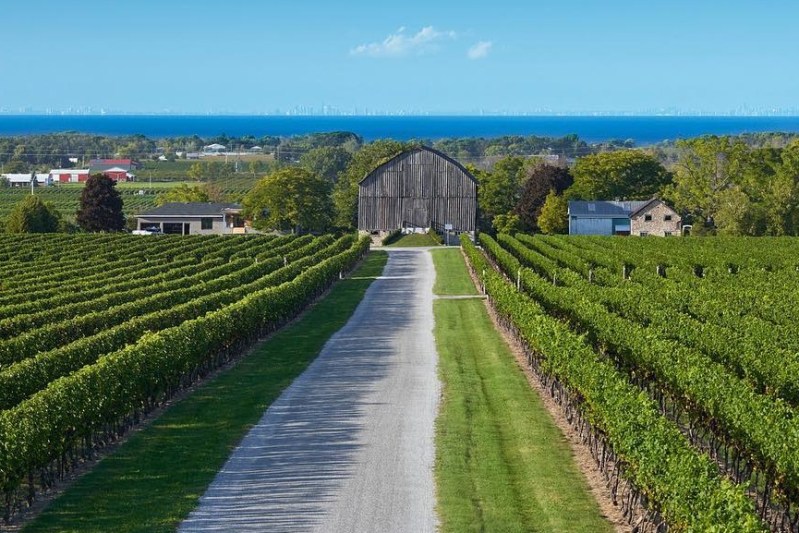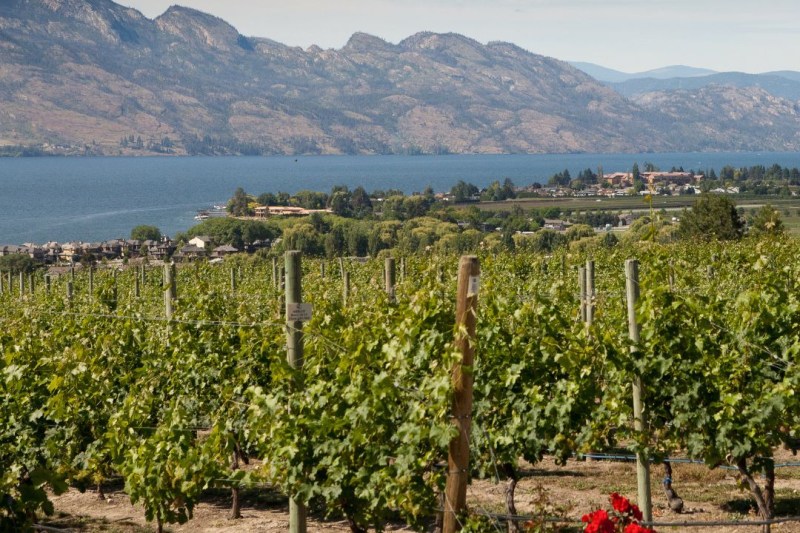From incredible scenery to world-class cities, Canada has a lot going for it. Throw a respectable wine scene in the mix and you’ve got every reason to set up a trek to the Great White North, glass in hand.
Most jump to whisky or a good Bloody Caesar when they think of Canadian drinks, but the wine landscape is quite sizable. Hundreds of producers dot the map, from rolling hills near Lake Ontario to the east to high dessert growing areas like the Okanagan Valley in British Columbia. Best, a lot of the best spots for Canadian wine are just across the border, a convenient outing from many of our large metro areas.

The lion’s share is coming out of Ontario, the province famous for its ice wine. And while Canada is the global leader in this particular style of cold-climate, often syrupy-sweet dessert wine, it makes many other styles as well, especially in its southern stretches. People are increasingly looking to the land for both improved takes on trusty hybrid grapes and new perspectives involving iconic varietals.
Ontario
Ontario’s oldest and best-known appellation (dubbed Geographical Indications here) is the Niagara Peninsula. Set at the base of Lake Ontario, it’s home to glacial soils, a cooling effect from the nearby lake, and ten sub-appellations. It’s just a short hop across the border to the Finger Lakes wine region, one of New York state’s most famous. The principal varieties here include Chardonnay, Pinot Noir, Gamay Noir, Riesling, and Cabernet Franc. The wineries stack up here, situated right on the lake and moving inland higher up on a bench. If you like clean wines with nice acidity and freshness, this is prime terrain. It’s also become home to a nice sparkling scene with a keen interest in Pet-Nat wines. It’s not uncommon to run into plantings of Cabernet Sauvignon and Baco Noir as well, not to mention Vidal, grown almost exclusively for ice wine.
There’s also the North Shore of Lake Erie and Prince Edward County. All told, about 60% of Canada’s wine comes from this province, which benefits from good dirt and the microclimates and breezes tied to the nearby large lakes. For city dwellers, there is a fair number close to the vibrant city of Toronto, including some urban operations within city limits. Consider having your home base in the city and getting away by the day to wineries and tasting rooms. We like Sandbanks Estate Winery, Southbrook Farms Winery for its impeccably modern facility (and fun orange wines, among others), and Iniskillin if you can’t resist the rich ice wine culture. But there are countless options to choose from so follow your palate.
British Columbia
West coast Canada is a bit different, from geology and wine perspectives, just to name a few. Much of the wine country here is inland, in dry, sunny valleys. It’s warm enough here for the likes of Syrah, Pinot Gris, Merlot, Malbec, Sauvignon Blanc, Semillon, and more. It’s home to the nation’s second-largest winegrowing region in the Okanagan Valley, where roughly 8 out of every 10 bottles produced in B.C. comes from. In the mid-1970s (it’s a young industry here too, much like the U.S., affected largely by Prohibition), growers started having good luck with white grapes like Gewurztraminer and the scene began to take shape.

There are now some 200 wineries here and now 11 sub-appellations, after having just approved a half dozen more earlier this year. It’s arguably the most exciting locale on the Canadian wine map, evolving fast and turning out some great wine en route. Much of it resides close to the border, making it a pretty convenient weekend trek for folks in places like Seattle and Vancouver.
Tastemakers of note include the Peak Cellars in Lake Country, the excellent Pinot Noir and Riesling courtesy of Martin’s Lane, and Desert Hills, known for its Gamay Noir, Zinfandel and some choice Viognier. As always, grab a map and ask around if you’re lucky enough to go. For lodging, consider Watermark Beach Resort and The Cove Lakeside Resort in Kelowna.
Other
Quebec and Nova Scotia are home to vineyards and wineries as well, but in much smaller numbers. You’ll find grapes like Marechal Foch and Seyval Blanc here, and wines ranging from dry or sparkling to sweet or fortified. Quebec is now home to more than 100 producers, with the Eastern Townships being the most concentrated, set in the southern part of the province. As you might imagine, there’s a fair bit of winemaking history here, dating back to the French exploration era in the 18th Century. It’s a very short growing season here, so often hybrid grapes are utilized and some growers even go out of their way to warm the soil during certain stretches of the year.
Find it Here
If a trip to Canada is not in the cards, you can likely find some solid wine offerings from our neighbors to the north at your favorite local bottle shop. Wines from the Okanagan Valley and Niagara areas are more and more sought-after, meaning more options domestically at wine shops and restaurants.
And, given the current regulations at the border (which are quite limiting), you may want to procure Canadian wine this way whether you travel or not as it’s often cheaper or at least less of a headache. One more reason to drink Canadian wine? The labeling standards are among the strictest and most honest on all of wine, meaning you’re going to be enjoying exactly what’s listed on your bottle of choice.
Editors' Recommendations
- How to make a killer meatloaf (and it’s easier than you think)
- Far older than you think: A beginner’s guide to Mexican wine
- The Godfather cocktail is an underrated gem (and you only need 2 ingredients)
- When you see “Cru” on a wine label, here’s what it means
- How many glasses of wine are actually in a bottle? You might not like the answer


